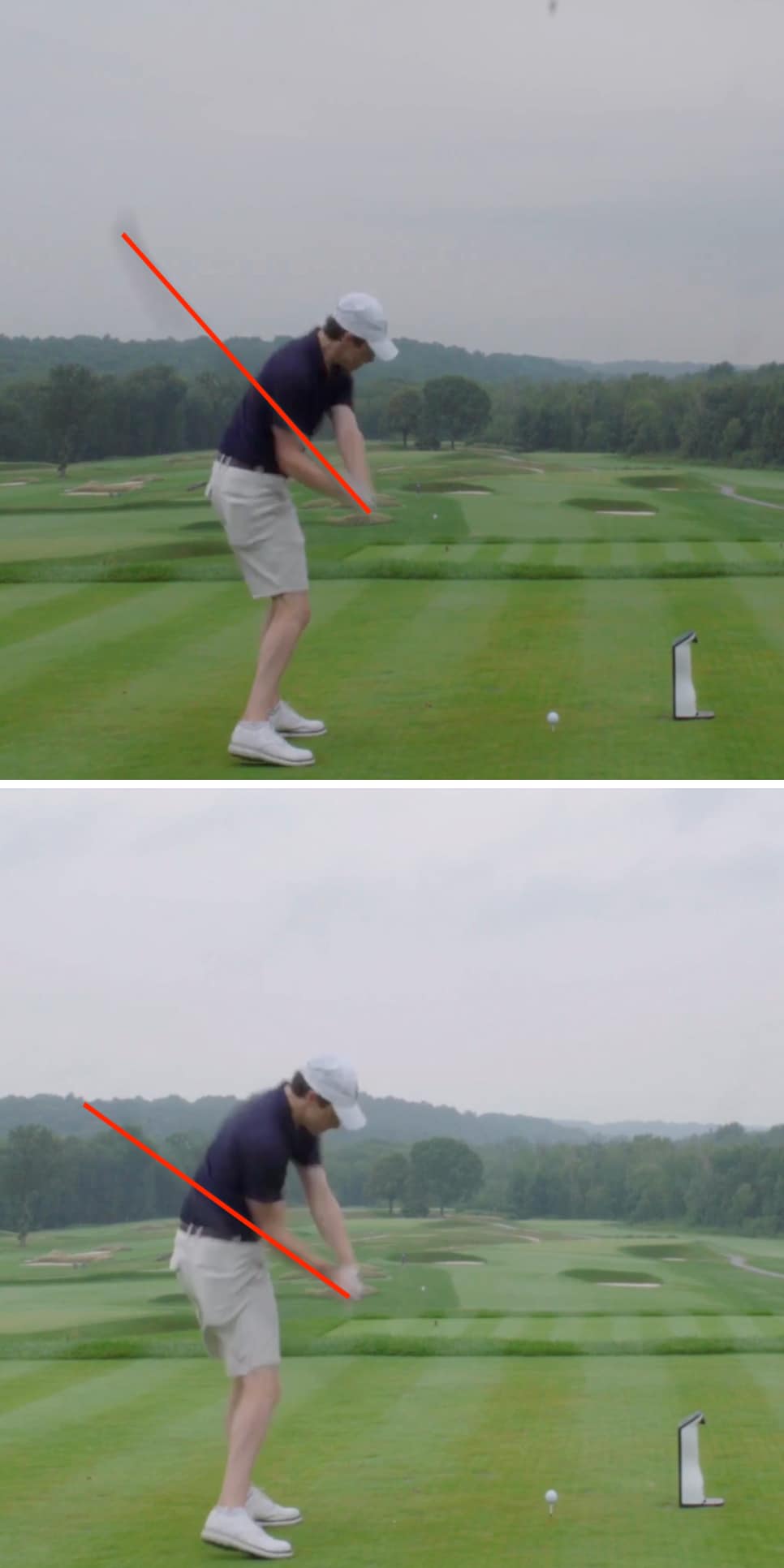Top teacher: 6 things I wish every student knew before getting a golf lesson – Australian Golf Digest

- by Admin
- August 10, 2024

I spend a lot of my teaching time with tour players and top college and junior players. As a result, I don’t get to spend as much time with beginning golfers as I once did. That’s one of the things I love about being at Old Palm Golf Club—the constant interaction with and opportunity to see and watch golfers of all skill levels.
However, I recently had the opportunity to help Justin “Juice” Valakis, a well-known tarpon fishing guide and dear friend of mine out of Key West, to teach him to play golf again after 12 or 13 years.
Juice was teaching me to tarpon fish at the same time and it helped reinvigorate my teaching. It reminded me how to be a good student, and how to get the most out of the learning process.
Here are some tips and lessons from my golf instruction and fishing time with Juice that can help you become a better student, too. — Tony Ruggiero, Golf Digest Top 50 Teacher
1. Go into each lesson with an open mind, not preconceived notions of what you think you should be doing
A story from our fishing journey: Early on I noticed Juice hadn’t been charged for a short excursion to fish. I asked Juice about it he said don’t worry, it was nice to spend time with someone who listened and tried to do what I asked and wanted to learn. Someone who didn’t think they had all the answers. That point hit home with me. I had personally made it a point when undertaking the task of learning to tarpon fish that I wanted to listen and learn. I wanted to be what a model student would be for me on the lesson tee. So if you want to get more out of your lesson, show up with an open mind and listen and communicate, as we discuss below.
2. Make sure you have a clear understanding of what you are trying to do
I find that people gloss over the very basic and simple fundamentals of the task. For me in fishing it was what to do when a fish hit the line but for golfers it can be as fundamental as understanding how the ball gets in the air and where the club intersects with the ground. Students often say they didn’t get under it or didn’t lift it.
That comment shows the golfer doesn’t understand exactly what they are trying to do.
One of the pivotal moments with Juice was getting to the very basic concept that in the golf swing the club is swinging down at the ball and the low point of the swing is actually in front of the ball. Once Juice understood low point his entire perception of what he was trying to do changed. His questions changed dramatically: “so to have the club hit the ground in front of the ball I have to turn my body past the ball?” It seems simple but students and teachers often make assumptions that each of them are on the same page.
Taking time to go slow and truly understand the concept no matter how simple can often pay big dividends with faster development, as you can see here. Here is a clip of where the light bulb went off when we explained low point to Juice and how to hit the ball as a result
3. Don’t skil the small stuff. Setup is everything!
So many students want to jump right into stuff they see in their back swing or forward swing that they don’t like or perhaps learning to posture your feet, hips and trunk so they are balanced and can move correctly is critical to improving. We came up with a process that helped Juice learn to get in the correct posture as well. Golf is a rotational sport, and it helps our body’s ability to rotate back and through the better we are balanced at address.
I have a saying that the body’s No. 1 job is to not fall down. If you’re out of balance from the start your body won’t rotate and won’t create the speed that it can if it’s afraid of falling and out of balance. Lots of golfers overlook posture, not because they want poor posture or to be out of balance, but simply because they don’t know how to get into good, balanced posture.
We helped Juice understand how his hips and trunk worked and gave him a process on how to get into the ball so that he was balanced. This simple process can help you improve your set up as well.
4. Mark Twain once said, ‘write what you know.’ The same goes for teaching.
It helps make a player “get it “ quicker if you can relate the new move or movement to something else that they do. As I said earlier, golf is a rotational sport, and our job is to help you learn to move the club around your body with the rotation of your body. A pivot! When a pitcher throws he will wind up into his trail foot and then push off and rotate through to the lead leg and release the ball, same in throwing a football or a med ball against the wall in the gym.
Relating the golf movement to other motions you do in other sports you play is extremely useful and helpful to learning a new motion. We had a breakthrough with Juice by explaining how delivering the club was similar to casting a fishing lure out into the flats to catch a tarpon. When equating the golf swing to something he knows and does the light bulb clicked.
My point here is improving your golf swing can be as easy as learning to take a rotational movement you already do and applying it your golf swing.
5. Everything you do in a lesson should be able to be written on a notecard
I still stick to this advice from my longtime mentor Mark Wood. How many times do golfers go practice after a lesson and can’t get the feeling or move back they had in the lesson? Here’s how to stop that from happening. Whether a tour player or a beginner you should write your own notes in your own words at the end of a lesson. I think it should all fit on a notecard.
Nowadays most people just type it into their phone. Regardless of where it goes you writing it and putting down “your feels” will help you stick to what you learned and make progress. I encourage students to write their set up keys and cues down, their back swing feels and forward swing feels or cues. Dr. Greg Cartin does a great job here helping Juice summarize his notes and feels in a way he can get back to it easier and quicker. Watch Dr. Cartin and Juice make notes and feels so they can perform better next session
6. Learn to play golf not golf swing
Understand the difference between working on your golf swing on the range and going out to play golf and shoot a score. They are completely different tasks. One of the cool things I learned tarpon fishing that applied to golf was how in chasing tarpon Juice didn’t just take us out to find fish and throw in bait. Rather we anticipated where the fish were going once we found them and made a plan to get in the right position to put the bait out in front of them.
That’s exactly what better players do. Better players don’t just fire at the hole but rather they look at each hole and look at where the best place to come into green is and then figure out what the best club off the tee to put it there is.
Tour players then look at the greens and see where the best place to leave a ball is if they miss it. Tour players always have a knack to leave the ball in the easiest place to get it up and down. Tour players understand they won’t hit every shot perfect and are navigating their way around a course the way we navigated a boat through the fishing flats in Key West. If you think like a tour player and or a tarpon fisher you will play better golf. If you approach working on your swing as we did with Juice you will hit better shots, develop new and improved movements and combine that with how to think your way around the course you will become an overall better player.Take it from Juice after 12 years he’s learning to golf again and loving it. He is even turning me into a fisherman! Watch the whole episode as we turn Juice into a golfer and he turns us into tarpon fishermen!
This article was originally published on golfdigest.com
The Latest News
-
November 14, 2024Aussie golfer wins Korn Ferry Tour’s rookie of the year
-
November 14, 2024Cam Smith welcomes NSW Open showdown with Lucas Herbert, but plenty of golf remains – Australian Golf Digest
-
November 14, 2024AFL 2025 season draw released, featuring finals rematch in Opening Round and 23 Thursday night games
-
November 14, 2024AFLW upstarts Hawthorn put ruckus behind them and turn focus to Port Adelaide
-
November 14, 2024How Josh Giddey’s confidence shooting the ball is fuelling his early season form for the Bulls | Sporting News Australia




